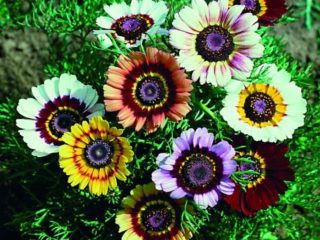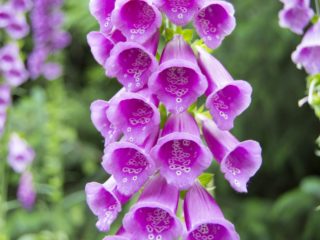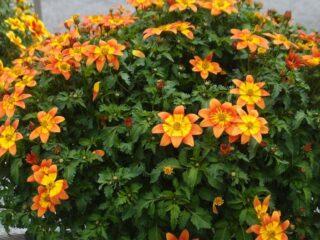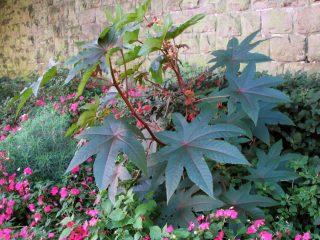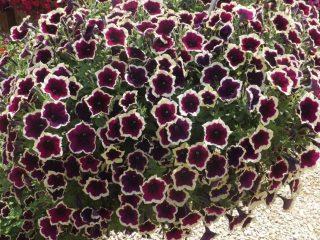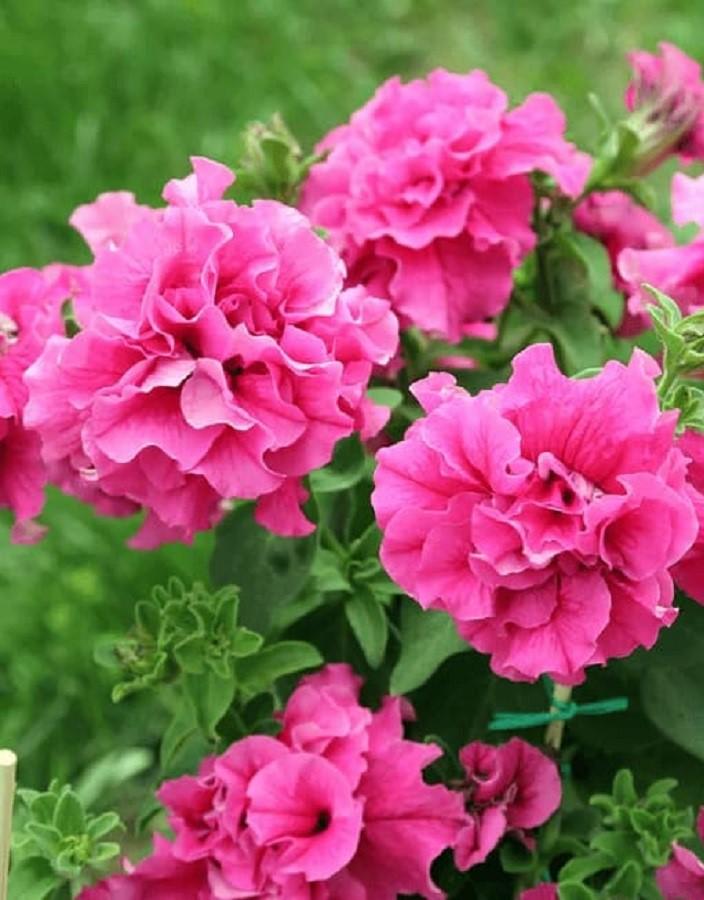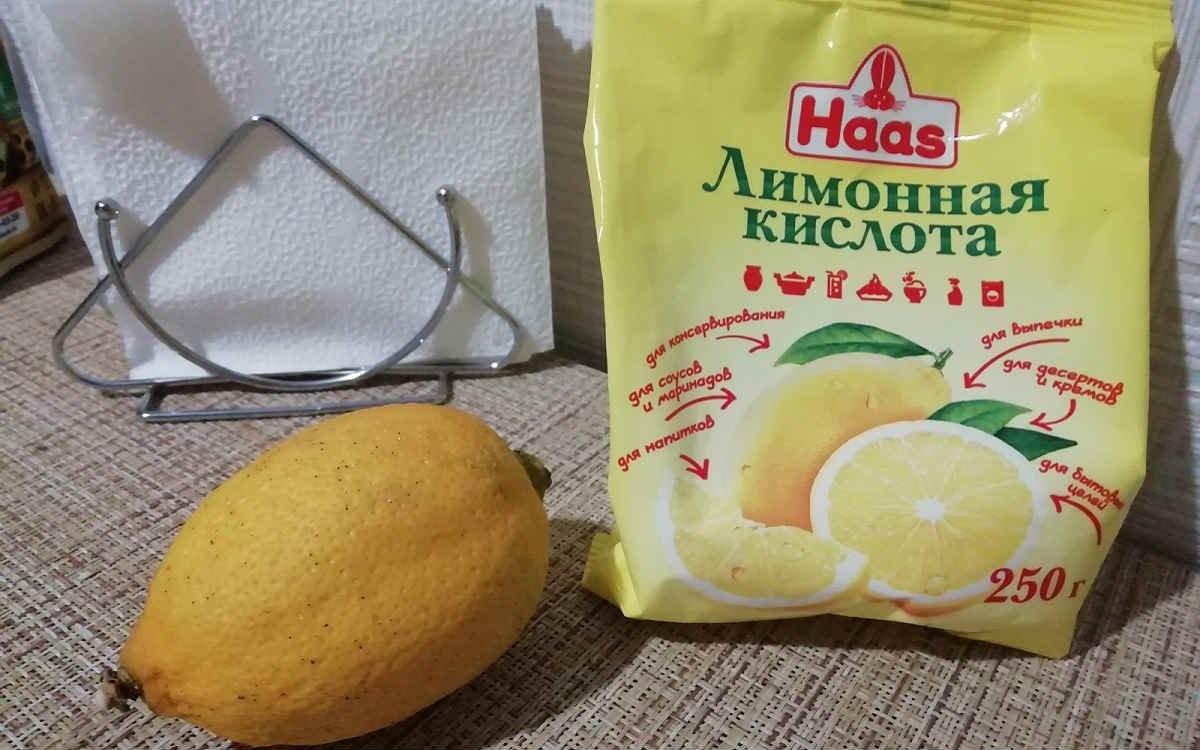Content
Cultivation of eustoma (lisianthus) is associated with a number of difficulties. The fastidious plant requires a lot of time and attention from the grower. Planting and caring for eustoma in Siberia has its own characteristics. Mostly annual species of ornamental plants are suitable for growing in harsh regions in open ground conditions.

By strictly following the rules of agricultural technology when growing eustoma, even in Siberia you can get bushy flowering plants
Suitable varieties and types
Growing eustoma in Siberia is a complex process, but possible, as confirmed by photos of summer residents. Two types of annuals are most suitable for cultivation in difficult climatic conditions: the large-flowered type and the Rasella lisianthus. Some popular varieties fall into this category.
Aurora
Bushes of the Aurora eustoma variety grow up to 85 cm. The flowers are shaped like rose buds in the form of an ideal glass. Complex transitions of pastel colors are noticeable in the soft pink or blue petals bent along the edge.

Terry large flowers of eustoma variety Aurora reach a diameter of 5-7 cm
Echo
Eustoma Echo is one of the most popular varieties of eustoma. The bushes of the plant grow up to 70 cm in height. Plain or with a bright border, flower petals are arranged in a spiral around the core.

Currently, there are 11 variations of the Echo eustoma variety with buds of different colors
Loyalty
The snow-white petals of the eustoma variety Fidelity are twisted in a spiral. Strong, low-growing stems (no higher than 20 cm) form a lush bouquet at the top of the bush.

The variety Fidelity can be transferred from the site to the house for the winter and grown as a houseplant
Florida pink
The Florida pink variety of eustoma has highly branched shoots. Double buds bloom on densely leafy stems.

Perennial Florida pink in Siberian conditions is cultivated as an annual or grown as an indoor flower
Other low- and medium-growing varieties of eustoma can be grown in Siberia. Information about the possibility of cultivating certain varieties is contained on thematic websites and on bags of seed material.
Growing eustoma in Siberia from seeds
A common method of growing ornamental crops in Siberia is sowing with seeds. It is best to prepare for planting eustoma in winter.
When to plant eustoma seedlings in Siberia
The optimal time for planting eustoma seedlings in Siberia is December-February, the deadline is the first month of spring. If sowed in a timely manner, the plant will bloom in the summer.
Planting eustoma seedlings in Siberia
When growing eustoma in Siberia, at the end of winter or spring, containers (boxes) and soil mixture are prepared, which are sterilized.It is important that the soil for ornamental crops contains a small amount of nitrogen. The growing process includes several stages.
- Sowing. Try to distribute small seeds evenly over the soil surface.
- The container with seedlings is covered with film or glass to create a greenhouse effect.
- The seedlings are regularly sprayed with settled water from a spray bottle.
It is necessary to constantly monitor the condition of the seedlings. If condensation accumulates on the surface of the film (glass), the spraying procedure is temporarily excluded. The first shoots appear after two weeks. After a short time, the shelter is removed.

Agrotechnicians recommend adding a rooting agent to the water for watering eustoma seedlings.
Transplanting seedlings into pots
After several full leaves appear on the bushes, the seedlings are transplanted into separate cups (pots). A good choice is peat containers. The procedure is planned approximately 2.5 months after sowing the seeds. Young plants are replanted along with the soil, being careful not to damage the root system.
The relocated bushes are watered with water at room temperature with the addition of a rooting agent and covered with transparent cups on top. You can use cut plastic bottles as a mini-greenhouse. Eustoma bushes are pinched between the third and fourth pair of leaves to stimulate the formation of lateral shoots.
During the period of active growth, the crop needs additional lighting. The procedure is organized by connecting special phytolamps or household fluorescent lamps.

From the axils of the leaves remaining after pinching, stepsons grow and strong flower stalks form
Planting in open ground
Planting of eustoma flowers in Siberia on a site is carried out at the end of May or at the beginning of June. As a rule, by this time the weather is consistently warm. To obtain a good result during cultivation, careful attention to the needs of the delicate plant is necessary.
Caring for eustoma in Siberia
Caring for eustoma in Siberia after planting in open ground in the spring is carried out according to the same scheme as in regions located in the temperate climate zone. The algorithm includes typical agrotechnical procedures.
Watering
Eustoma reacts poorly to both drying out and excessive soil moisture. Experienced florists know that constant monitoring of the condition of the top layer of soil in the area where flowers grow is necessary.
Top dressing
The plant is periodically fed with fertilizers. The worked out scheme includes:
- watering with a biostimulant solution (Epin, Zircon, etc.);
- fertilizing with Heteroauxin to activate the root formation process;
- fertilization with phosphorus- and potassium-containing compounds to stimulate the formation of buds.
Mixtures for feeding eustoma can be purchased at almost any gardening store. Most suitable for the plant are universal fertilizers intended for flowering crops.
Trimming
A mandatory procedure when growing eustoma is pruning fading buds. The operation helps to activate the growth of new inflorescences. It is also necessary to cut off parts of the plant that have rotted to localize the process.

Flowering of eustoma in Siberia continues until late autumn and stops when the temperature drops below 0 0C
Wintering
As already noted, annual varieties of eustoma are cultivated in Siberian conditions. However, if the plants are transplanted into pots and moved indoors, flowering will resume next year. Containers with relocated bushes are sprayed against fungus, having previously removed all the buds, and kept in a room with an air temperature of no more than +10 0C. During wintering, adhere to the following rules:
- stop feeding the plant completely;
- watering is carried out extremely rarely;
- To retain moisture, the soil in the pots is sprinkled with sifted river sand.
Eustoma that has successfully survived the winter begins to bloom in March. With the arrival of warmer weather, the bushes can be replanted in the flower garden.
Diseases and pests
Often, even in the summer season, cool and cloudy weather is observed in Siberia. Bad weather provokes the development of fungal diseases. Most often, eustoma is affected by:
- gray rot;
The disease is typical for outdoor plantings and manifests itself in the form of spots on the leaves and flowers of eustoma
- powdery mildew;
The development of powdery mildew is provoked by low night temperatures and poor ventilation
- Fusarium
Fusarium wilt occurs due to excessive soil moisture and oversaturation with nitrogen fertilizer.
Preventive treatment of the flower garden with a fungicide solution helps prevent the development of fungal spores. Eustoma plantings attract some pests.Most often, flower crops suffer from insects such as:
- aphid;
Aphids lay eggs on eustoma leaves and penetrate flower buds
- scale insect;
Leaves and shoots of eustoma damaged by scale insects are vulnerable to fungal diseases
- spider mite
Eustoma leaves dehydrated by mites dry out and fall off, the heavily infested plant dies
To protect against insect pests, flowers are sprayed with insecticidal preparations (Prestige, Aktara). The multiplied slugs are collected by hand or lured into the lids of cans in which beer is poured.
Conclusion
Planting and caring for eustoma in Siberia requires significant time and labor. Only strict adherence to the recommendations of agricultural technicians allows you to obtain beautiful bushes with strong shoots, abundantly covered with elegant flowers.
Reviews about growing eustoma in Siberia









